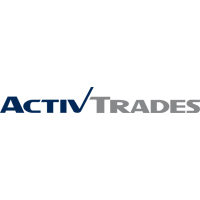Everyone loves a growth story. A scrappy startup turns into a global brand, investors are happy, headlines are made. But behind the scenes, growth isn’t always about luck or even product-market fit. More often, it comes down to the thing no one sees at launch: architecture.

The way a platform is built — not just how it looks, but how it functions under pressure — determines whether it can actually scale. That’s true in nearly every digital business, but especially in high-demand industries like iGaming, where performance, compliance, and multi-region delivery all collide. A great example of this in action is explored in What Makes an Online Casino Platform Scalable, which breaks down what it really takes to go from “cool idea” to cross-border operation.
You Can’t Bolt on Scalability Later
Most startups focus on getting version one out the door — and rightly so. But many forget to ask: what happens when it actually works? If your infrastructure isn’t ready, growth becomes painful. Every update takes longer. New features break old systems. Expansion into new markets means hacking together workarounds just to keep things live.
Scalability isn’t something you plug in later. It’s a mindset baked into how you build from day one.
Growth Isn’t Just About Traffic — It’s About Complexity
Sure, more users is great. But what really challenges a platform is complexity. Multiple languages, currencies, content providers, data privacy laws — these things don’t scale cleanly without the right setup.
A scalable platform isn’t just one that handles more traffic. It’s one that manages more variation without imploding. It has a modular backend. APIs that speak to each other. A compliance engine that can adapt to new regulations without rewriting half the codebase.
And when you’re in an industry like online casinos — where you’re operating across legal jurisdictions and player expectations shift by the region — that kind of agility isn’t a luxury. It’s a requirement.
Architecture Is the Growth Strategy No One Talks About
Ask any team that’s been through hypergrowth: what slowed them down wasn’t the users — it was the tech. Or more accurately, the shortcuts they made early on that didn’t scale.
Companies that get it right think about architecture not just as infrastructure, but as strategy. It’s what lets them roll out updates quickly, test new features without fear, and expand into new regions without rewriting everything.
Startups That Scale Well Build With the Future in Mind
The difference between a startup that fades and one that turns into an enterprise often comes down to a simple question: did they build for growth, or just for launch?
Yes, speed matters. But so does stability. And the businesses that balance both — by making smart architectural decisions early — are the ones that don’t just survive scale. They thrive in it.

 Hot Features
Hot Features













